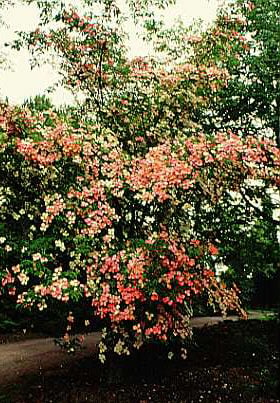Cornus 'Porlock'
dogwood 'Porlock'
A small, spreading deciduous tree with elliptic leaves turning red in autumn. flowerheads to 8cm in width, comprised of tiny greenish flowers surrounded by four large, ovate creamy-white bracts. Fruits red, strawberry-like
Size
Ultimate height
4–8 metresTime to ultimate height
20–50 yearsUltimate spread
2.5–4 metresGrowing conditions
Moisture
Moist but well–drained, °Â±đ±ô±ô–d°ů˛ąľ±˛Ô±đ»ĺpH
Acid, Alkaline, NeutralColour & scent
| Stem | Flower | Foliage | Fruit | |
| Spring | Green White | Green | ||
|---|---|---|---|---|
| Summer | Green | |||
| Autumn | Red | Red | ||
| Winter |
Position
- Full sun
- Partial shade
Aspect
South–facing or West–facing or ·ˇ˛ą˛őłŮ–f˛ął¦ľ±˛Ô˛µ
Exposure
Exposed or Sheltered Hardiness
H5Botanical details
- Family
- Cornaceae
- Native to GB / Ireland
- No
- Foliage
- Deciduous
- Habit
- Bushy
- Genus
Cornus can be deciduous shrubs or trees, or creeping, woody-based perennials, some with brightly coloured young stems. Tiny flowers are borne in dense clusters, sometimes with showy bracts. Many have fine autumn colour
- Name status
Accepted
How to grow
Cultivation
Grow in well-drained soil in sun or partial shade. For more advice, see flowering dogwood cultivation
Propagation
Suggested planting locations and garden types
- Cottage and informal garden
- Low Maintenance
- Flower borders and beds
Pruning
Pests
Generally pest-free but may be susceptible to horse chestnut scale
Diseases
May be susceptible to cornus anthracnose and honey fungus
911±¬ÁĎ
911±¬ÁĎ is the UK’s leading gardening charity. We aim to enrich everyone’s life through plants, and make the UK a greener and more beautiful place.
